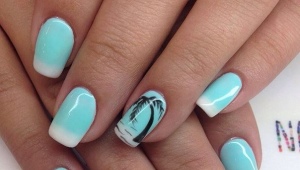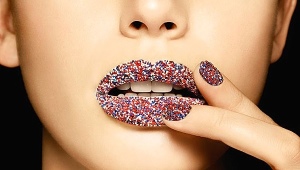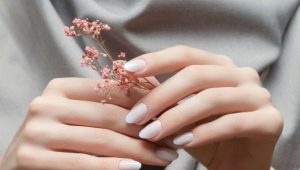Hardware manicure

Well-groomed hands with neatly processed beautiful nails are an indispensable attribute of a successful modern woman. In any beauty salon, as well as on sites that advertise offers of such services, you can find a manicurist and visit him every month. The most widespread is the edged manicure with moceration, however, in recent years, the so-called hardware manicure has become increasingly common. How does it differ from edged, what are its advantages and disadvantages, and whether it is possible to make it yourself - we will try to tell about all this in our article.
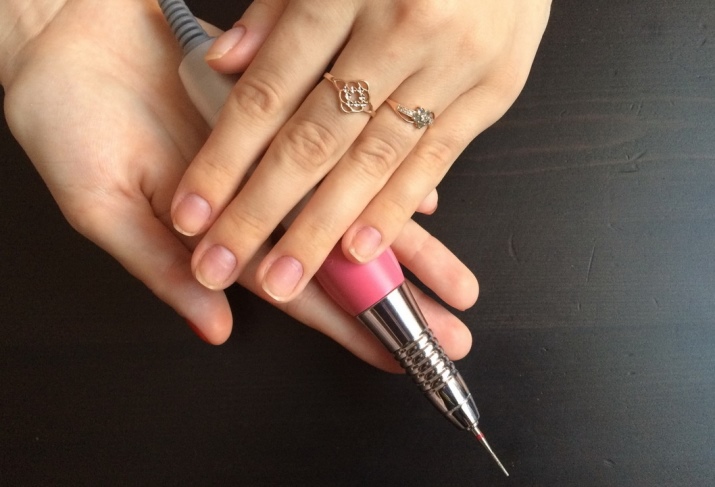
What it is?
As the name implies, hardware manicure (as well as pedicure) is a procedure for removing the cuticle and processing the periungual ridges, performed using a special apparatus with interchangeable cutters, each of which has a certain shape and size and is intended for processing a particular area. Outwardly, it looks a bit like a medical device used by dentists to drill teeth. However, its functions are completely different. The cutters supplied with the machine have a diamond cut of varying degrees of abrasiveness. Rotating, they remove particles of dead skin, nail scales, cut off the cuticle and polish the area around the nails.

Also, with the help of this device, you can cut extended nails and adjust their shape. Some machines are even equipped with a device for drying varnish.
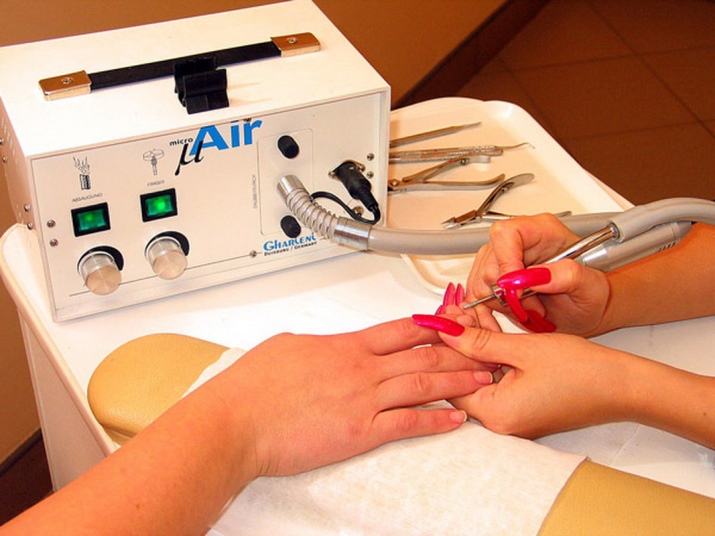
Features and Benefits
The most important feature of hardware manicure is dry processing of skin and nails. That is why it is recommended for those who have problem nails:
- Layered;
- With an uneven surface;
- With a rapidly growing cuticle;
- With a very thick cuticle;
- With peeling of the skin of the hands.
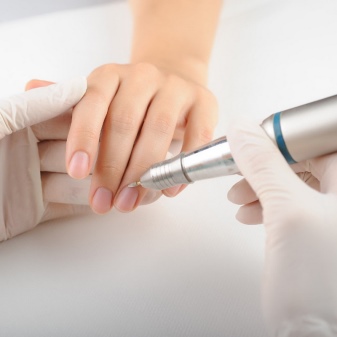

Any beauty procedure has supporters and opponents. Did not escape this fate and hardware manicure. Satisfied customers who have made a choice in his favor note the following advantages:
- Absence of cuts and traumatization of the skin;
- This is a safe procedure in terms of hygiene. An infection, like a fungus, cannot be introduced during its implementation;
- With regular processing of the cuticle and periungual areas with a milling cutter, the skin begins to grow more slowly, the cuticle becomes thinner and is no longer so striking. Correction is enough to perform once every 1-1.5 months;
- The device does not injure the nail, prevents the appearance of tuberosity and delamination;
- When performing a pedicure, the router copes well with calluses, corns, removes dead skin particles and polishes it.
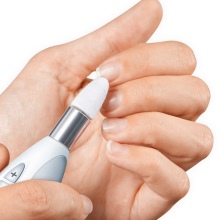
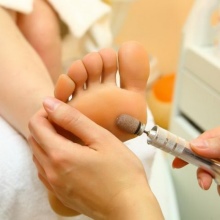

The disadvantages of hardware manicure are:
- It is not suitable for the treatment of too neglected nails - with a thick cuticle, hard and coarsened periungual ridges. Only moceration and subsequent cutting of the skin with tweezers or scissors can cope with such problems;
- If the nail plate is naturally thin, hardware manicure is contraindicated.

So, now let's talk about what, in fact, you should expect from the procedure and how to prepare for it. Firstly, since the treatment of the skin is done only “dry”, you should not first be in the pool, bath or sauna; do not do laundry, wet cleaning or washing dishes. It is advisable not to come into contact with water at all.



Secondly, do not be surprised by the variety of cutters and the fact that the master will change them repeatedly in the course of action, as well as adjust the rotation speed. During the procedure, a good specialist uses 3 or more nozzles. Each of them has its own function: one copes well with the removal of the cuticle, the other fights with hangnails for the smoothness of the periungual zone; the third removes artificial material from the surface of the nail, etc.
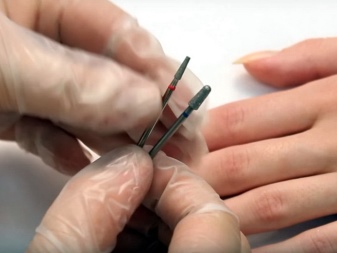

Very often, during the first procedure, they offer to perform a combined manicure. This is due to the fact that some areas of the skin are too rough for processing them with a router and it is better to cut them with scissors. In this case, everything is done only "dry". Most of the work goes to the machine. After 2-3 combined manicure sessions, it will be possible to stop only at the hardware one, because the skin will no longer grow so intensively.

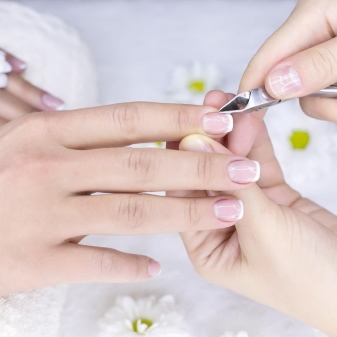
By the way, male manicure is most often combined. Their cuticles and periungual areas are hard, with hard rough skin, there are calluses on the fingers, especially in those men who are engaged in manual labor. Therefore, they need preliminary softening with water or a special remover. If water is used for these purposes, treatment with the device is contraindicated, if a remover, you can cut off especially rough skin with scissors, and then grind your nails with a machine. The same applies to performing a combined pedicure.
Cutters can not always cope with large areas of roughened skin, then special pedicure files with a large working surface, as well as sharply sharpened tweezers and scissors, come to the rescue. But no other device can process the areas between the fingers better than a milling cutter.
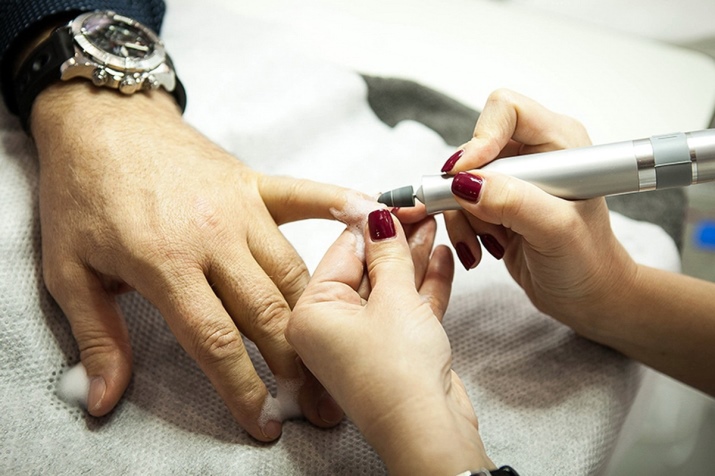
How to choose a device?
In order not to get confused in the variety of devices offered and to make the best choice in terms of price / quality ratio, you should clarify a few nuances:
- Do you need a machine only for manicure or are you going to use it for pedicures as well? A device designed for both procedures has more functions and is more powerful, but its cost is much higher than a conventional manicure machine. If you are not going to do a pedicure, choose the option for hand treatment only;
- In what conditions will you operate the router: at home or in the salon. For the home, it is better to purchase a less powerful device, within 5000 rpm. The same advice is relevant for beginners. Such machines are incapable of injuring the skin, even if you are not yet too deftly able to handle them. They are lightweight and compact in size. Among such devices, we can recommend purchasing products from companies Vitek and Avon - Inexpensive and easy-to-use kits for home use.

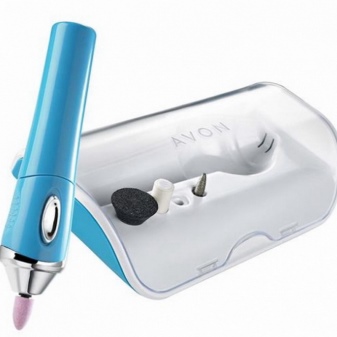
If you intend to work in a beauty salon, then you need to choose a more professional router that works at high speeds. It is advisable to purchase an apparatus equipped with a vacuum cleaner for collecting nail chips and dust. Additional options include built-in lighting and the ability to switch the direction of rotation of the cutter.
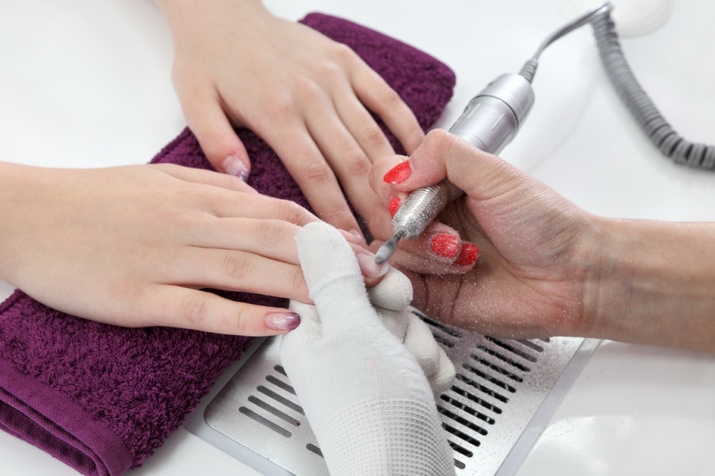
Professional equipment is produced by companies such as Marathon, RuNail, Planet Nails, Nail Master. However, before acquiring one of these devices, you should hone your professionalism as a master, since these routers have a very high rotation speed and in inept hands can harm the client:
- Will you also do pedicures and work with artificial nails. Very important question. If you want to provide customers with a full range of nail services, then you will need a multifunctional machine, especially powerful, with a large number of different cutters and a foot control pedal. One of the best of these machines Orbita 50 from Planet Nails.
- Will you go home. If you are not going to work stationary, renting a place in the salon, but intend to provide your services at the client's home, you need to think about the fact that the manicure device should be light and compact so that it can be easily carried in a suitcase. It also makes sense to look for a machine with a battery that can work not from an electrical outlet, but offline.
- How long do you intend to use the machine. Of course, no one wants to spend money on a device that breaks down in a month. Therefore, buy it only in trusted stores that provide warranty (at least 12 months) and post-warranty service. A good bonus is the presence in the kit of brushes for cleaning the engine and the function of protection against excessive heating.
- Ease of use. It is advisable to check whether the machine is suitable for you personally even before you start working on it. Turn it on, feel its weight, hold it in your hands. When buying online, you miss out on this opportunity.Therefore, do not be lazy and visit 2-3 stores with such equipment. Perhaps you will pay a little more, but you will be sure that you have not acquired a beautiful and functional, but inconvenient device.
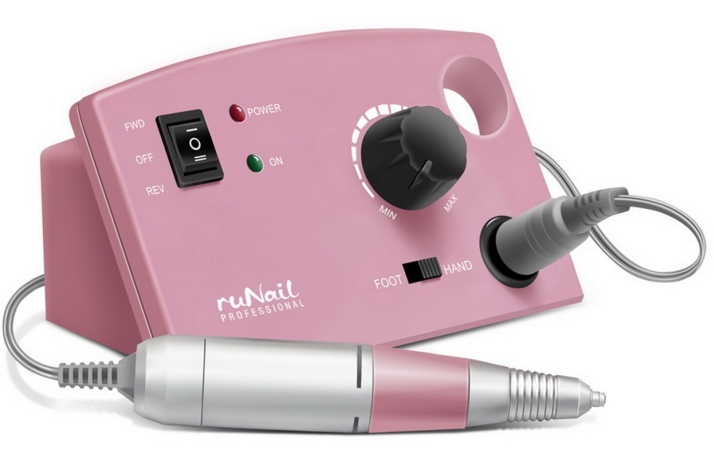


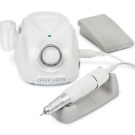

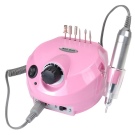
How to do it right?
In principle, there is nothing difficult in mastering the technique of hardware manicure. Now there are many training courses and video tutorials. Also, for a fairly reasonable fee, you can go to any school of manicure art and learn how to use a router in a couple of lessons. It all depends on the level at which you will apply your knowledge - at home or professionally.
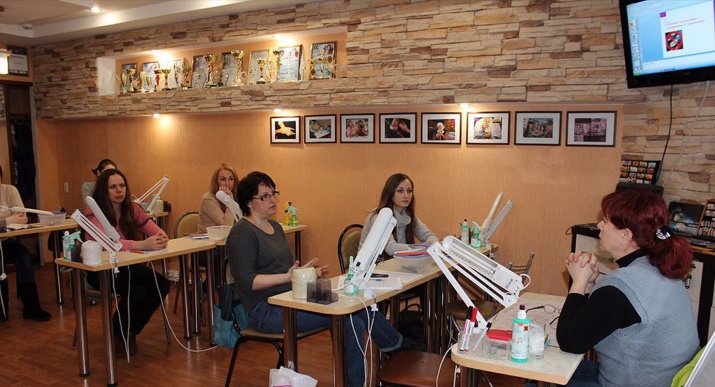
Hardware manicure technology step by step:
- Treat your hands antiseptic spray. If there is varnish on the nails, remove it with a remover without acetone;
- Next, you can do the following: with a pusher or an orange stick, gently push back the dry cuticle on all fingers and proceed with the treatment. Or you can apply a special softening agent on it, it is still often used when performing a European manicure. Wait a few minutes and also start processing. Both of these methods are correct. You just have to choose which one you like best;
- Take the manicure machine in your working hand and hold it as you would normally hold a pen when writing. Start working at a speed no higher than 1500 rpm, as you gain professionalism, increase the speed of rotation. Do not press the device too hard, do not press it against your finger to avoid the risk of injury;
- Set the cutter in the shape of a needle. Work the cuticle on the sides; then gently lift it with the tip of the cutter, without touching the surface of the nail;
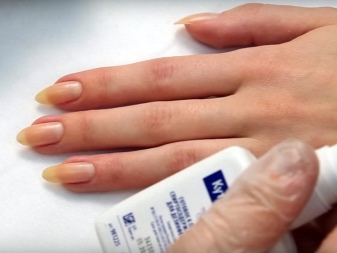

- Change the cutter to a cone cutter. Remove the cuticle. Act carefully. Do not forget - if suddenly the cuticle cannot be cut off by the device, scissors and tweezers can always come to the rescue;
- Next, take a bullet-shaped nozzle. Sand the cuticle and periungual ridges. If there are severely roughened areas, try to process them with the largest milling cutter at moderate speed;
- When the skin around the nails is ready, Start polishing your nails. Use a cutter in the form of a hard washcloth. Polish gently, touch the very tip of the cutter;
- Processing completed. Apply a special nourishing oil to the skin and nail, it will well moisturize the skin and saturate the nail plate with useful trace elements;
- If you want to varnish your nails, degrease them and apply a transparent baseto align them. Then paint them with colored varnish in 2 layers;
- The final step will be hand treatment moisturizer.

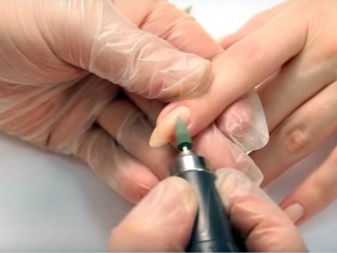
As you can see, there is nothing complicated. You can easily do a hardware manicure yourself at home. Just take into account the level of your training: if you are new to this business, buy a simple starter kit for hardware manicure first, learn how to use it, and only then move on to more serious machines.
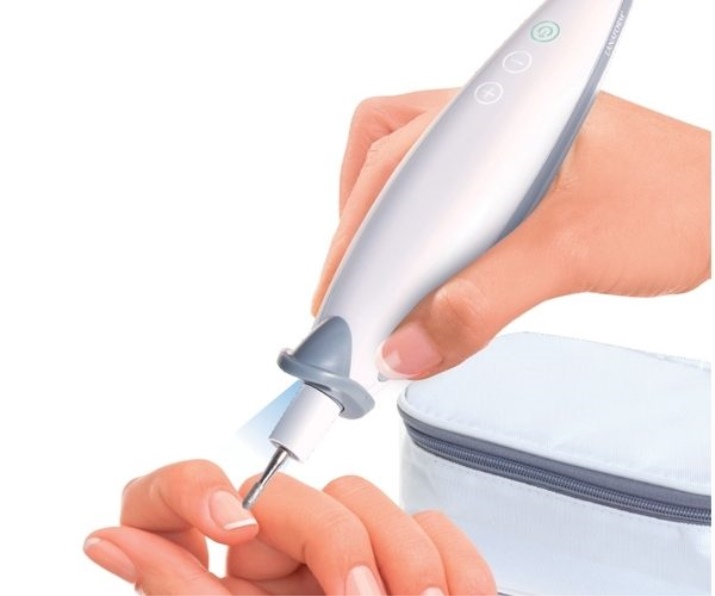
Secrets of specialists
Never neglect the advice of masters who have been successfully performing hardware manicures for their clients for a long time. The beauty industry does not stand still, new cosmetic products appear that make work easier and the latest devices with improved functionality. The technology of processing marigolds is also being improved. For more successful work, follow these simple rules:
- If you, in addition to manicure, also do pedicure, use cutters with higher abrasiveness;
- Select cutter size according to size the area that you are going to treat;
- It is better for a novice master to start from minimum speed, gradually increasing them. Otherwise, you may injure the client;
- Stop work every 5-7 minutes to avoid overheating and damage to the device;
- Move the cutter from center to edge nail, do it smoothly, do not linger for a long time in one place;
- Don't take water procedures before a manicure session;
- When you start polishing the surface of the nail plate, don't pressure her, only lightly draw on it with the softest cutter;
- When treating the cuticle and periungual areas, hold the cutter at an angle of 45 degrees; you need to grind the nail, holding the device parallel to it;
- Move your hand opposite to cutter movement. Then you will get the best result.
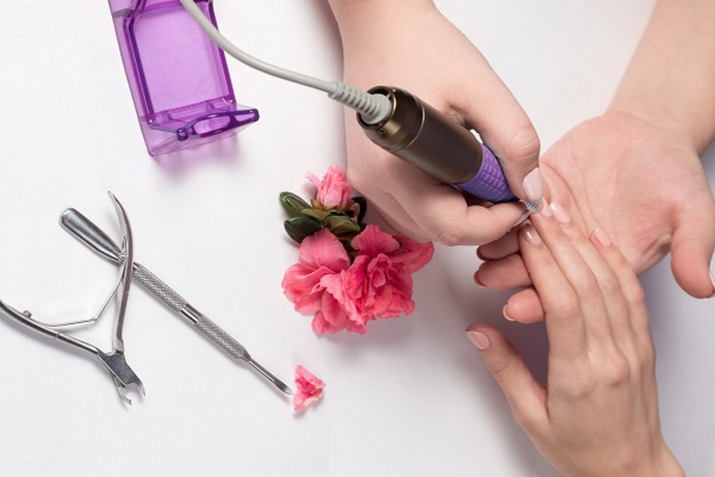
Reviews
Hardware manicure has many adherents. This is not surprising: performing it with a milling cutter has many advantages and advantages over edged ones. Firstly, no risk of cuts. For clients with blood vessels located close to the surface of the skin, this has a special meaning - after all, any scratch is fraught with quite profuse bleeding for them. And in general, it’s not pleasant for anyone, having come to a pleasant cosmetic procedure to get at least a small, but injury.


The second advantage follows smoothly from the first: if there is no open cut, then there is no risk of infection or fungus. Of course, this does not mean that the master can process everyone in a row without changing or disinfecting the cutters, not at all! For each client, an individual set of nozzles is necessarily used, which after the procedure is sent to a dry-heat cabinet. However, with a trimmed manicure, any microbe that is in the air or on the working surface can get into the wound, with a hardware manicure this possibility is excluded.
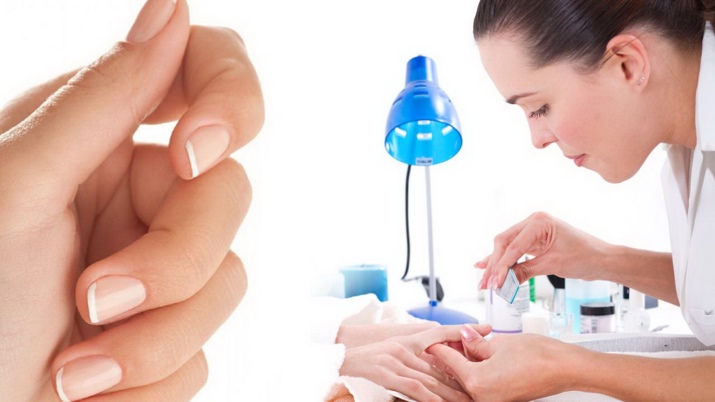
Also, satisfied clients note that since they switched to hardware manicure, their cuticles and periungual areas remain neat for much longer. The skin no longer coarsens and does not grow as much as before, the cuticle has become thinner and does not require frequent correction.
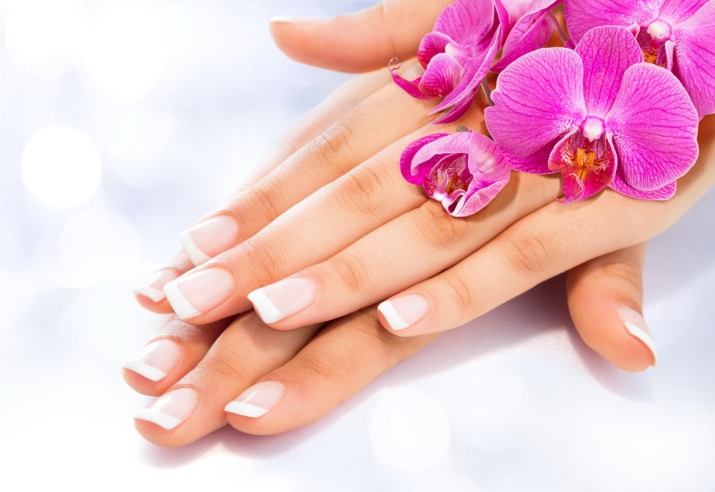
Another advantage of such a manicure is its appearance. What can I say, sometimes an inexperienced master is able to cut the cuticle with scissors so that his fingers begin to resemble some kind of bits with drops of dried blood. When processing the skin with a router, even if the master is not too experienced, the worst that can happen is that he simply does not cut off the cuticle completely, but does not disfigure your hands in any way. If you are lucky and you find a good master, get ready to show off your nails like from the pages of a fashionable glossy magazine. It is also important that it takes less time to perform a hardware manicure than a trimmed one with moceration. In the rhythm of a big city, this cannot but rejoice. For every woman, whether she is a business woman or a simple housewife, any free minute is worth its weight in gold, because it allows you to spend time with your family or sign another lucrative contract.
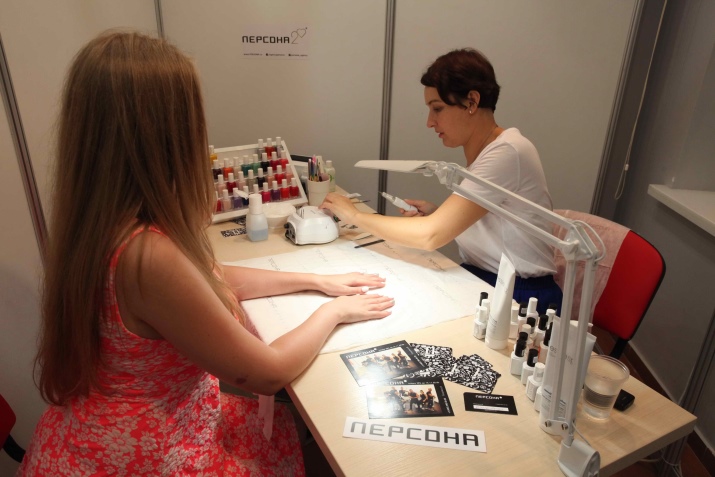
Of course, not without a fly in the ointment. Hardware manicure also has opponents and they have weighty arguments.Firstly, let's not forget that the machine is an electrical device and in inept hands can cause harm. For example, saw through the nail plate. There were such cases, and most often they occurred when cutting artificial nails, when the master was too “carried away”. Owners of sensitive plates may feel pain during grinding, as if the nail is burned. And, finally, for some it is simply unpleasant to listen to the buzzing of a typewriter and feel its vibration for an hour.
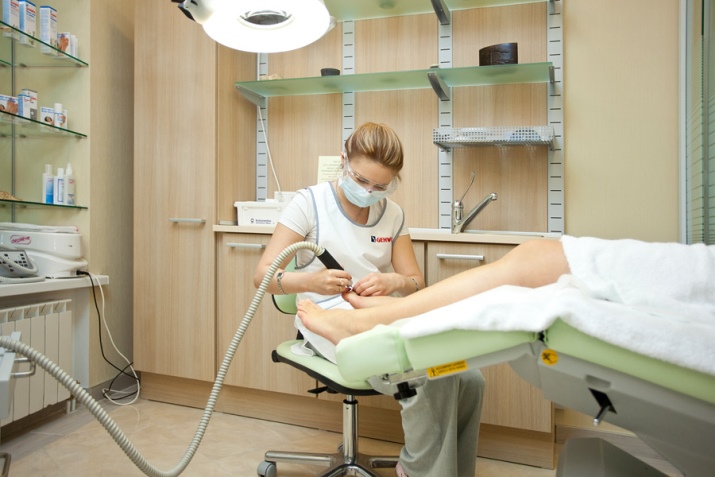
In general, no matter what type of manicure you prefer, remember that the most important thing is that the end result suits you. Any feedback and advice is purely subjective.
For information on how to properly perform a hardware manicure, see the following video.






















